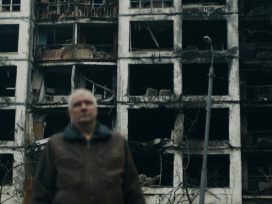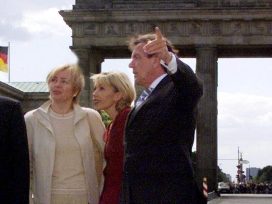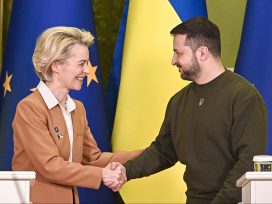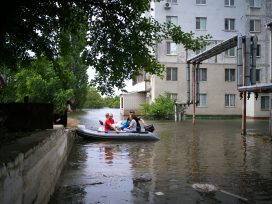The art of misunderstanding
The idea that the purpose of culture is reconciliation confronts Ukrainian cultural activists with a dilemma: how to preserve one’s dignity while keeping the attention of western institutions?
In front of me sat a grey-haired woman with a quiet, slightly hesitant voice. She had contacted me through mutual friends in Tbilisi, where she had recently organized a project. Her foundation had worked for a long time in the South Caucasus and ‘other conflict regions’, encouraging ‘mutual understanding through art’. It now wanted to expand to Ukraine, ‘due to the current conflict’.
It was 2017. I had recently moved to Switzerland after twenty years of cultural practice in Ukraine. Maybe this was my chance to do important and useful work with a foundation that had been established by a Swiss diplomat known, in particular, for having participated in negotiating the Minsk agreements.
The woman, let’s call her Dina, was a lecturer at the Zurich University of the Arts. She wanted, quite rationally, to start with research: to visit places ‘in or close to the conflict zone’, talk to the locals, hear their needs. Overall, the program was already clear: there would be a few master classes by Swiss musicians, dancers and performers, some work would be done in schools or with young artists, some help would be given to refugees, and some art exchanges might take place.
In short, the arts would be put to the service of peace-making and dialogue. This is how the foundation had worked for five years in Abkhazia, an unrecognized break-away region of Georgia, as well as in the border regions of Georgia and neighboring Armenia. Dina was especially proud of the projects in Abkhazia: the region is very poor and even crossing the heavily guarded border was almost impossible.
I tried to explain to her that Ukraine is nothing like Abkhazia. There is no ‘conflict’: there is a Russian-instigated war of occupation that had already been raging for three years. I could hardly believe I had to explain all this to a person who should have known what was happening in Ukraine and in the South Caucasus first-hand. ‘You cannot imagine how rich and vibrant cultural life is in the south-east of Ukraine, even close to the ‘conflict line’,’ I said; ‘how much has happened since 2014, how many initiatives and people connect this region with other parts of the country. We will have to listen to local cultural activists very carefully if we want to do something that will actually make sense.’ Dina looked at me with a mixture of sadness and sympathy.
That autumn, she and I traveled to Severodonetsk, Sloviansk, Kramatorsk, Dobropillia, Bakhmut and Mariupol. In Kyiv we met with several cultural activists, some of whom had been forced to flee eastern Ukraine. Others were based in the capital but were working with partners in the east. A few months later, Dina prepared a funding application to the Swiss Agency for Development and Cooperation for a project that, in addition to workshops for schoolchildren from the ‘grey zone’ along the conflict line, focused on handicraft workshops for women from the areas controlled – and not controlled – by the Ukrainian government. Over a period of eight months, women from both sides of the military border that divided the Donetsk region would meet in Mariupol, weave or embroider something under the guidance of Swiss artists, and talk about peace.
The project was rejected, largely because of concerns for the security of the people involved. Dina returned to building dialogue in the South Caucasus, paid for by the Swiss government and various philanthropists. I was left with memories of incredible people and cities, the true value of which I understood only this year, after some of them almost disappeared.
Compulsive reconciliation
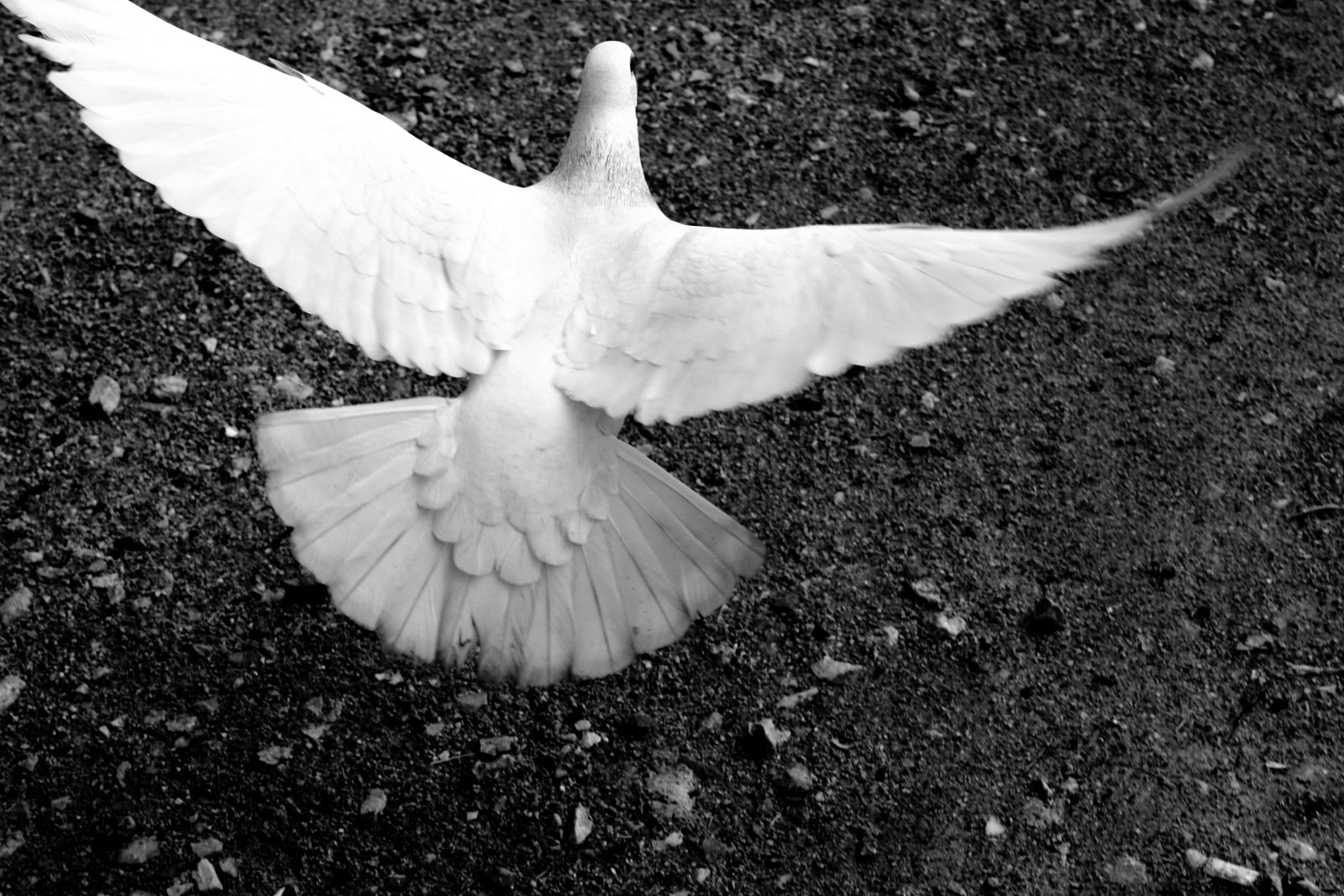
A dove. Image by Vladimir Agafonkin via Flickr
Most Ukrainian cultural activists have faced similar attitudes from their western European colleagues at least once since 2014: a desire for reconciliation together with a patronizing attitude towards Ukrainian positions. As unpleasant as it was before, it is now simply unbearable.
Invitations to participate in panel discussions, to attend workshops or submit artworks to joint exhibitions, to publish texts in a collection, to take part in a film festival are regular occurrences — a frantic wave of well-intentioned invitations with no end in sight. Most of these gestures of goodwill are invitations to enter dialogue with Russian cultural actors. Generally they are not motivated by solidarity and empathy, but the belief that it is within the cultural field that dialogue and reconciliation between the aggressor society and the society under attack should take place. Only occasionally do these events involve people from countries and contexts with similar experiences of prolonged aggression, resistance, and struggle for identity: from Palestine, Syria, Afghanistan, Bosnia-Herzegovina, Kosovo and elsewhere. During the first nine months of the war, just one panel I spoke on included someone from another conflict zone: a curator from Bosnia. It was a particularly warm and important conversation.
Since the beginning of the full-fledged aggression that broke out on 24 February 2022, the Ukrainian cultural community has been actively looking for a solution to the problem of ‘compulsive reconciliation’, trying to tread the fine and sometimes dangerous line between preserving one’s dignity and the need to retain the interest and attention of western cultural institutions, media and platforms where one can talk about the war in Ukraine. I doubt a general solution exists: each situation is unique and must be dealt with separately.
However, there are several approaches that seem very important when talking about the arts and reconciliation. One of them is to borrow from feminist rhetoric phrases like ‘no means no’, ‘my body (country) my choice’ and ‘nothing about us without us’. In seeking to defend not their position but the right to have a position, Ukrainian cultural activists are turning to the tools of an emancipatory discourse that challenges the patriarchal power determining whose voices are important and whose are not; who has the right to decide what happens to their bodies and who does not.
By using a feminist vocabulary designed to defend female subjectivity and the agency of the female body, Ukrainian cultural activists express the collective corporeality of war: its terrifying physical presence, its threat to each and every person, and the sense of community as a single organism, when the death or injury of even complete strangers echoes with intense pain.
When it comes to the conditions for ending the war, for demilitarization or understanding violence, the international feminist community is far from unanimous in its support of Ukrainian women’s voices and positions. Yet this emancipatory rhetoric has proven quite effective in the international artistic environment, which is generally sensitive to injustice, de-subjectivation and segregation.
But perhaps the most important feature of this defence of Ukrainian subjectivity is that it is directed not at the aggressor, but a ‘third party’ – a concerned observer who has taken on the mantle of ‘arbitrator’, a role that has always been theirs to assume.
The war in Ukraine is exposing the epistemological power of the global West (or North). This is the power to name and legitimize, to hold up a ‘gold standard’ of democracy, of social and political institutions, of histories and even traumas. It is the power to evaluate the development of other societies not on their own terms, but against a universal measure. It is the power to instrumentalize the cultural fields and the arts, a power so firmly established that attempts at reflection and resistance become almost impossible.
But there is another effective, though much less common approach that Ukrainian cultural activists have used in their artistic works and in public discussions. It entails entering the pacifist discourse but, instead of accepting forced dialogue or compulsive reconciliation, choosing disagreement; voicing one’s own position without fear of criticism or conflict. This is not just a radical assertion of one’s agency which defies the evaluator and their judgments. It is also the start of a much-needed discussion about the sources of the belief in art as the territory of reconciliation and the power systems that keep this belief in place.
The instrumentalization of culture
Like other former Second World countries, Ukraine was the beneficiary of a western cultural policy already applied to the Third World since the 1960s. Having lost much of its grip over its former colonies, the global West returned in the form of international development agencies, of which European cultural institutions often formed a part. Global corporations and mining companies were also a part of these aid packages. Financial assistance to young democracies was motivated by a mixture of guilt, national security concerns, and the promotion of business interests.
Development logic gave back power to the ‘white man’, this time in the nobler garb of helper and mentor who alone possessed knowledge of the architecture of society, governance and the economy. The development logic was ruthlessly practical, stipulating that all societal functions should be efficient, subject to assessment and evaluation. Culture was no exception.
Under the guidance and financial support of the West, culture lost its meaning and autonomy, its ability to be a system of relations in which liberation, awareness and subjectivity can grow. It was losing its utopian, visionary potential, becoming disconnected with the society to which it belonged, as well as its needs, traditions and challenges. The main function of culture, from Zimbabwe to Senegal, from Nigeria to Colombia, became to reduce inequality, alleviate poverty and, above all, promote social cohesion and reconciliation.
Reconciliation ranged from conflicts between indigenous peoples and the descendants of colonizers; between former masters and servants; between different ethnic groups and communities (and their cultures) which ‘historically’ (a euphemism for ‘the decision of the former metropole’) found themselves in the same country; between victims of genocides and the perpetrators and their descendants; between those who protested against corrupt or criminal local authorities and their legitimate and unwavering representatives.
Countless western (or northern) cultural peacemakers visited (and still do) the Global South with workshops and lectures, masterclasses, and summer schools. They taught children and adults, amateurs, and professionals how to find common ground and inner peace through the arts. They organized joint choirs and even orchestras, advised museums, libraries and universities. They were not necessarily detached from reality, although sometimes it was not clear what the reality was. For decades, even local cultural and social activists had been thinking in terms of ‘underdeveloped democracies’ that were essentially corrupt and in need of ‘inequality reduction’ and ‘conflict prevention’, unconsciously borrowing from a vocabulary imposed from above.
In the 1990s, this wave of aid reached eastern Europe and the former Soviet Union. Another batch of young democracies needed mentoring, especially after the Yugoslav Wars. Although culture only came into focus later during the 2000s, it was still approached as an instrument of belated education or enlightenment, as a way to stitch together the tattered social fabric of individual societies, if not whole regions. After the Maidan Revolution and Russian occupation of Crimea and parts of eastern Ukraine in 2014, calls for reconciliation and mutual understanding grew exponentially.
I am not saying that it is the forms and methods of support that constitute the problem. Rather, it is the epistemological system on which this support is based. The ‘development logic’ behind the instrumentalization of culture assumes that the development of societies is a standardized linear process. It stipulates that the world is divided into the fully developed societies of the Global North and those that are somewhere en route. Development epistemology is based on forms of knowledge and social interaction inherent to these ‘successfully developed’ societies.
This system of knowledge and its carriers – those who make key decisions and those who monitor the processes of their execution – are a priori external to any development processes in the societies of the former third and second worlds. In this system, there is no place for ethnic conflicts, nationalisms, memory wars or real wars; for annexations, revolutions, coups d’état, identity conflicts (or identities in general) or culture wars. Any conflict is a glitch that needs to be repaired, reconciled, dialogued. And this is where culture and the arts come in handy.
Decolonizing culture
In his lecture ‘Planetary consciousness and the possible future of culture’, Achille Mbembe talks about the different systems of knowledge and contexts in which culture exists outside the standardized utilitarian framework. Freed from its externally imposed functionality, culture provides ‘vital energy for various forms of writing, constituting archives, performing identity, thinking, remembering’.
Culture that resonates with its own society, that is in tune with it, chooses forms of remembering, living through trauma, expression of identities and social interaction that are necessary and within reach at any given moment. It can choose reconciliation or dialogue, but it must be the choice of its constituents. It can choose and use dialogue not for reconciliation, but as a form of cognizance, learning, and exposing ignorance, misunderstandings, or conflicts. This was at the core of the intense process of cultural exchange in and with eastern Ukraine after 2014.
What Ukrainian cultural actors started in 2014 was a process of cultural emancipation as a way of comprehending the reality here and now; a dream of different possible futures. It was a process of decolonization of knowledge and representation. It was the articulation of the maxim ‘nothing about us without us’ in the language of culture.
After the beginning of the full-scale invasion, Ukrainian art assumed the role of radical decolonizer of culture in general. By resisting imposed pacification and forced reconciliation, Ukrainian artists are reclaiming the power of arts to bear witness, to preserve reality, to be present. For over nine months, they have been saying that art is not about understanding, and certainly not understanding between the aggressor and those who are defend their right to life and existence.
Responding to the open letter of Russian artist Dmitry Vilensky, Ukrainian artist Nikita Kadan wrote:
I have no use for words that do not save lives. For now, I prefer to stick with my own experience, with collecting knowledge about the crimes that are being committed before my very eyes. My thoughts are not with recovering ‘the territory of dialogue’; my thoughts are with recovering the occupied territory.
Published 2 January 2023
Original in Ukrainian
First published by Eurozine (English version); Dwutygodnik (Polish version)
© Kateryna Botanova / Dwutygodnik / Eurozine
PDF/PRINTPublished in
In collaboration with
In focal points
Newsletter
Subscribe to know what’s worth thinking about.
Related Articles

On top of housing, work and schooling, Ukrainian refugees with HIV face an additional, urgent difficulty: how to access the antiretroviral medicines they need to suppress the virus. In Poland, they face a particular stigma, causing many HIV positive refugees to conceal their health status.

Growing numbers of Russians are fleeing the stifling atmosphere that has settled across the country’s political and cultural realms. Nowhere is this more tangible than in the world of popular music – once a shared cultural space between the two nations, now just another battleground in Russia’s war against Ukraine.

